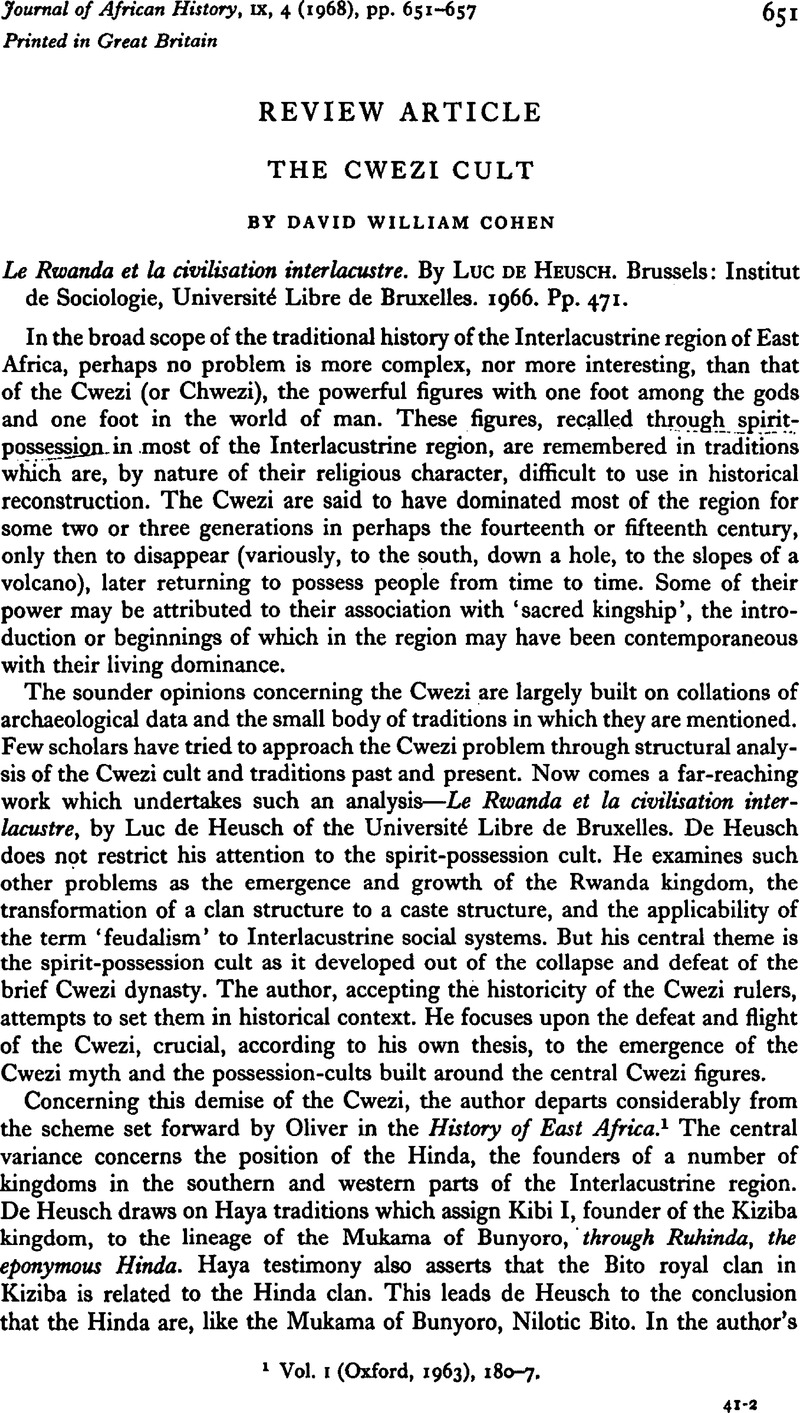
1 Vol. I (Oxford, 1963), 180–7.
2 Arnoux, A., ‘Le culte de la société secrète des Imandwa au Ruanda’, Anthropos, VII (1912), VIII (1913).Google ScholarJohanssen, E., Mysterien eines Bantu-Volkes, Der Mandwa-Kult der Nya-ruanda verglichen mit dem antiken Mithras-Kult (Leipzig, 1925).Google ScholarPagès, A., Un Royaume Hamite au centre de l'Afrique (Brussels, 1933).Google ScholarCoupez, A. and Kamanzi, T., Récits historiques rwanda (Tervueren, 1962).Google ScholarBösch, F., Les Banyamwezi, peuple de l'Afrique orientale (Munster, 1930).Google ScholarVansina, J., L'Evolution du royaume rwanda des origines à 1900 (Brussels, 1962).Google ScholarOliver, R., ‘The traditional histories of Buganda, Bunyoro, and Ankole’, Journal of the Royal Anthropological Institute, Lxxxv (1955),Google Scholar nos. 1 and 2; and, ‘A question about the Bachwezi’, Uganda Journal, XVII, no. 2 (1953).Google ScholarZuure, B., Croyances et practiques religieuses des Barundi (Brussels, 1929).Google Scholar
3 Both these types of spirits can be distinguished from non-anthropomorphic spirits.
4 Variously, Mukasa, Mugasha, or Mugasa.
5 This discussion draws on a large number of sources, but particularly the works of Apolo Kagwa and the traditions which I was able to collect in Busoga with the assistance of a grant from the Central Research Fund of London University and a Postgraduate Exhibition from the School of Oriental and African Studies.
6 In this volume, de Heusch describes how the Ryangombe-Cwezi cult was introduced to the Luba empire in the nineteenth century by the Yeke conquerors originally from Bunyamwezi (pp. 362−3).
7 An interesting example of this, besides the Bunyamwezi-Luba extension of the Ryangombe cult, was the nineteenth-century diffusion of the Nabingi (or Nyabingi,. Nabinge) spirit-figure tradition. Diffusing northwards, this tradition was taken up in parts of Rwanda, Kigezi (in Uganda), and as far north as Ankole.
8 De Heusch accepts Oliver's historical analysis of Wamara (ref. note I above) with a few reinterpretations.